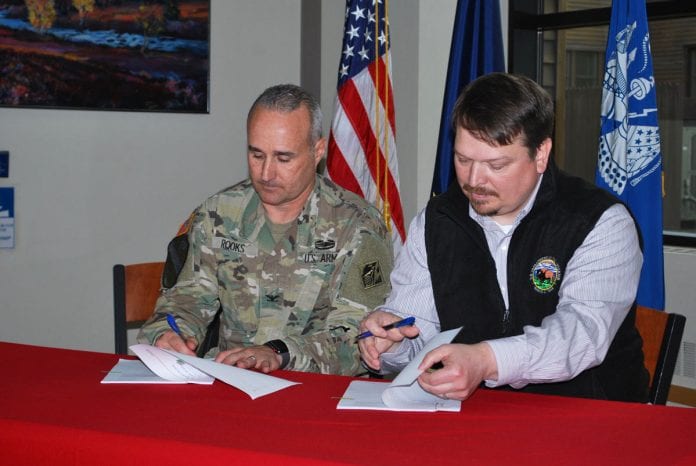
Federal officials have signed a joint record of decision that clears the way for development of a large open pit gold mine in the Kuskokwim River watershed, 277 miles west of Anchorage.
The mine lies land owned mostly by The Kuskokwim Corp., representing 10 Native communities, and Calista Corp., the Native regional corporation that owns the subsurface. It is to be built by Donlin Gold, which is owned by NovaGold Resources and Barrick Gold U.S.
The project, with an estimated operational life of 27 years is expected to produce some 30 million ounces of gold processing about 59,000 tons of ore per day.
Construction of the project is expected to take about four years, including the proposed mine site, transportation corridor and pipeline.
Signing ceremonies were conducted at the Corps’ headquarters at Joint Base Elmendorf Richardson on Aug. 13, with Col. Michael Brooks, commander of the Corps’ Alaska District and Joe Balash, Interior’s Assistant Secretary of Land and Minerals Management, signing the document. Representatives from Donlin Gold also signed and received their permits at the event, with representatives of the two Native corporations also present.
“From the very beginning, Calista has been interested in developing its mineral properties we had, including Donlin Gold, but for a long time our board didn’t get into that phase because of our environmental concerns,” said Andrew Guy, president and chief executive officer of Calista. “But we saw how NEPA (National Environmental Policy Act) worked and how well it worked about 15 to 20 years after NEPA was enacted we saw how it affected operations of mines.”
Guy also said people in that region would benefit from the introduction of lower cost energy and fiber optics into that area.
“It’s time for us to start developing our own resources,” he said.
Donlin told applied for a Department of Army permit initiating the need for an environmental impact statement, as required by NEPA, in July 2012. The Corps then led that effort with 12 cooperating federal and state agencies and six federally recognized Alaska Native tribes.
“The Corps and BLM in Alaska are pioneering this joint decision to show the public that their federal government can work together and make sound decisions on environmental reviews,” said Brooks, who called the results “a great step forward.”
The Department of the Army permit is for discharge of fill materials into waters of the U.S., including wetlands, and for construction of structures in and under navigable waters. The government estimates impact to aquatic resources on federal property t approximately 3,500 acres of wetlands and 226,000 linear feet of streams, and the authorization requires compensatory mitigation. The BLM is providing a right-of-way grant for construction of a natural gas pipeline and associate fiber optic cable.
To provide power for mine operation, Donlin will have to build and maintain a 316-mile, 14-inch diameter natural gas pipeline and associated fiber optic cable from the west side of Cook Inlet to the mine site. That pipeline right-of-way will traverse some 96.7 miles and 2,329 acres of BLM-managed lands north and west of the Alaska Range in the Kuskokwim River valley.
A copy of the EIS is online at http://www.donlingoldeis.com/EISDocuments.aspx
One section of the EIS deals specifically with risks associated with five substances proposed for use for the project, including diesel fuel, liquid natural gas releases, mercury or cyanide releases during transport, and tailings behind the tailings dam. The safety of those tailings would be under the Alaska Department of Natural Resources.














